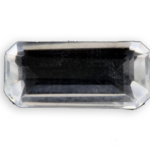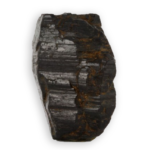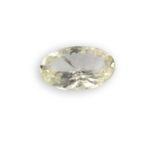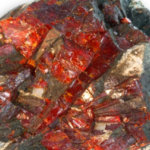
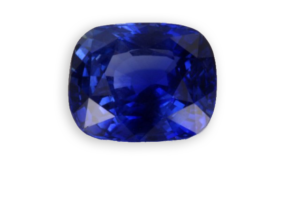
sapphire
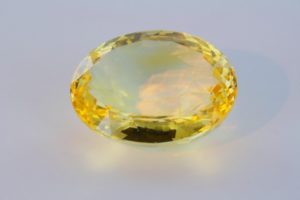
yellow sapphire from Sri Lanka oval cut
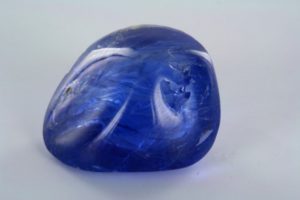
sapphire from Burma cut in cabochon
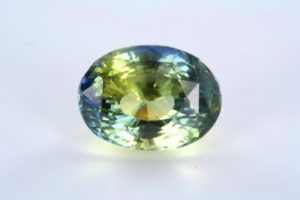
exceptional two – color sapphire from Sri Lanka
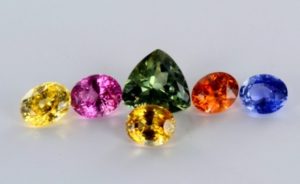
sapphires of different colors from Sri Lanka
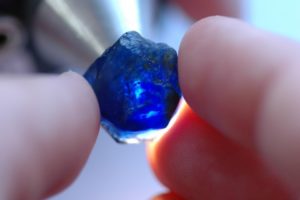
sapphire from Paeline in Cambodia
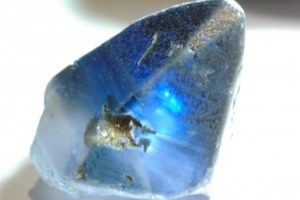
natural sapphire crystal from Sri Lanka
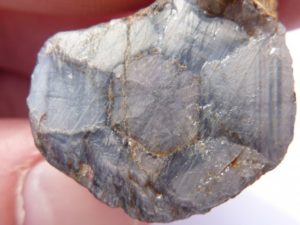
trapiche sapphire from Burma
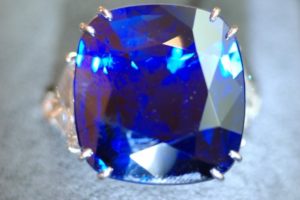
sapphire from Kashmir
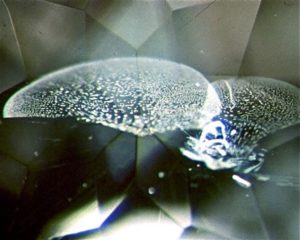
typical liquid type inclusion in sapphires: feathers inclusion
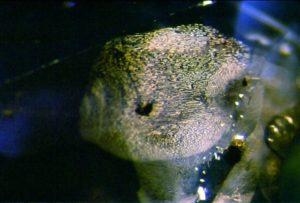
feathers with crystal
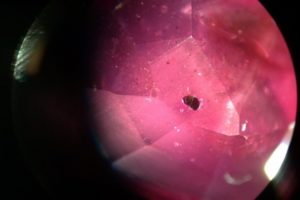
solid like inclusions : rutile
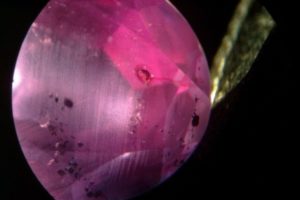
solid like inclusions : rutile
Detailed sheet
sapphire
Its name comes from the Hebrew “Sappir” which referred for a long time the blue gems, the “most beautiful things”. By 1800, it was shown that the ruby and sapphire were only varieties of the same mineral, corundum.
Currently, sapphire corresponds to all the blue corundum of gem quality. Colors other than blue are specified by an epithet: green sapphire, yellow sapphire, a colorless one, who is being called leucosaphir, and one that is orange “Padparadscha” meaning in sinhala “lotus flower”, because it recalls its color.
The name ruby is reserved to red corundum. In fact, there are no strict boundaries between the ruby and sapphire that tends to light red, pink or light purple. However, since the sapphire was formed in the upper layers of the earth crust, where the presence of titanium and iron is more frequent than that of chromium, it is not as rare as rubies.
The blue varieties, have so many subtle nuances, due to the presence of minute amounts of titanium oxide or iron, that the vocabulary is too poor to name them. It can be of all shades of blue, from light, as the aquamarine the most sustained blue. The most interesting ones are those from Kashmir, of a blue described as “velvety”. Those from Burma, indigo blue, are highly prized, as those of Sri Lanka who are the famous ” blueberry” blue,very lively, sometimes slightly purple. Sapphires from Sri Lanka are so famous that we talk often of “Ceylon sapphires “the former name of Sri Lanka.

CHEMICAL CHARACTERISTICS
Al2O3
aluminium oxide

PHYSICAL CHARACTERISTICS
Main color
blue
Other colors
colourless, yellow, black, orange, pink, green, purple
all shades of color except true red which is reserved for the ruby
Color of streak
white
Luster
adamantine, vitreous
Hardness
9.0 to 0.0
Density
3.95 to 4.03
Cleavage
none
Fracture
uneven

OPTICAL PROPERTIES
Transparency
transparent
it also can be translucent, opaque
Refractive index
1.762 - 1.782
Double refraction
0.008
very weak, uniaxial (-)
visible double refraction
No
Dispersion
0.018(0.011)
Pleochroism
definite
Number of colors
2
dark blue, blue - green. Low for yellow and green sapphires; hard for orange and pink sapphires
Absorption spectrum
471 - 460 - 455 - 450
for blue sapphire. 471460450 for the yellow

blue Ceylon sapphire spectrum system

dark blue sapphire spectrum system

blue Ceylon sapphire spectrum system
Fluorescence
variable
the blue is not fluorescent, but the pink is
Inclusions
rutile needles cause asterism for the starred ones. The fibrous inclusions are called silks of sapphire. The typical inclusion is a butterfly wing.

CRYSTALS PROPERTIES
pseudo-hexagonal prismatic or forming two pseudo-hexagonal pyramids united by their base, others are barrel-shaped, rhombohedral in form of alternating truncations (one on two) on each of the bases of the crude crystal, or tabular.
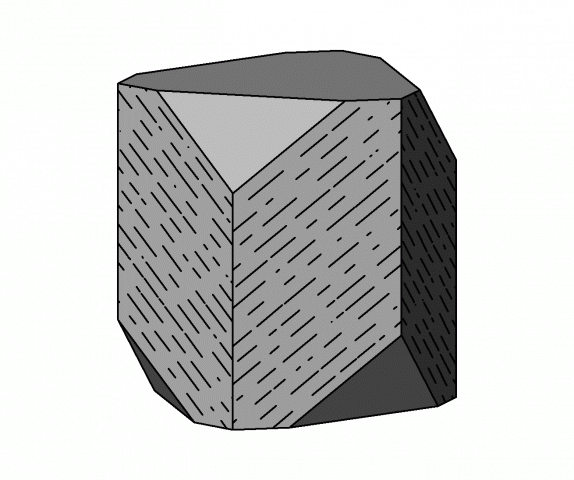
crystals system
trigonal

OTHER INFORMATIONS
Astrological sign
Capricorn, Gemini, Leo, Libra, Pisces, Sagittarius, Scorpio, Taurus
Month
september
Chinese astrological sign
Tiger

APPROACHING GEMS
Exploited
sites
It is found in marble, enlaid, basalt, pegmatites, but in practice, it is searched in the eluviums, and alluvial deposits. These are simple wells digged to access deeper layers. Its high density allows also to recover it by washing sand and gravel, which is then sorted by hand. The existing deposits are numerous and widely distributed …
In Burma, as for the ruby, it is towards Mogok, that sapphires are found, the rock being a pegmatite; it is also there, that in 1966, the largest star sapphire in the world was found, a crystal of 12.6 kg.
The region of Ratnapura, in the southwest of Sri Lanka, provides sapphires since ancient times. The gems are found in the alluvium. The stones are blue “ myosotis “ ( forget – me- not), a flower, or blueberry blue with a hint of purple, but there are also varieties of yellow, orange, green, pink, brown and colorless. We can say that over half of sapphires sold, come from Sri Lanka, the land of sapphires.
In Thailand there are two major producing areas: Chanthaburi, southeast of Bangkok, and Kanchanaburi, northwest of the capital. The stones are of excellent quality, of various colors and often with beautiful stars.
In Kashmir, the production started in 1881 and today, from mines located 4500 m above the sea level, we find in pockets of kaolinite beautiful sapphires.
Since 1894, Montana in (USA), produced sapphires, the works, stopped in 1920, and were resumed sporadically since 1985. In Australia, mainly in Queensland, where they have been known since 1870, the are extracted by washing eluviums, where bedrock is basalt. Their quality is average, the blue gems turning into a dark color tint black ink, blue green or even black under artificial light. There were also found some black star sapphires.
We must also mention the mines of New South Wales which, since 1918, are producing quality sapphires.
Other deposits are in : Brazil (Mato Grosso, Minas Gerais), China, Cambodia (Pailin), Argentina , Colombia, Kenya, Malawi, Nigeria, Tanzania (Umba river banks) Songea, Madagascar, Zimbabwe, Finland (Lapland), Czech Republic, Switzerland and even France (Auvergne).
use in jewelry
Sapphire is one of the most widely used gems in jewelry, it is cut cabochon or faceted, and is found on winders watches of famous Parisian jewelers. Traditionally, the blue sapphires were practically the only ones used. Currently all shades of colors are used and combined on jewelry. The pink, yellow and blue colors are teaming particularly well.
The sapphires the most sought, are those from Kashmir, which have an incomparably velvety blue color, the price for carat of a nice blue sapphire from Kashmir goes up to several tens of thousands of dollars.
It is currently in Sri Lanka that most of the sapphires used in jewelry are produced, and also the famous “Padparatscha”.
The star sapphires with a 6 pointed star is also highly sought after when, in addition to this phenomenon, they have a beautiful blue color and the asterism is due to fine needles of rutile being developed within the stone during its crystallization.
The sapphire is the stone of the fifth anniversary year of marriage and also the 45th.
Daily care
and precautions
As the ruby, it is one of the easiest gems to maintain, as impact resistant, of a great hardness and impervious to acids and heat. Washing with water and dish soap and rinse with water, then with alcohol.
imitations and
treatments
There are numerous possible doublets: from cobalt blue glass covered with a thin layer of garnet, a greenish sapphire ring with a culet of synthetic sapphire blue, small colorless natural sapphires glued together with a dark blue cement.
Some colorless corundum are heated to 1700 ° C with addition of titanium and iron to color them superficially on the surface but if they are immersed in glycerine, there show some more marked dark blue contours, which are a sign of a diffusion treatment.
The star sapphires can be imitated by gluing a sheet of blue enamel in a cabochon star rose quartz, or even by engraving the underside of a cabochon blue glass.
It is in the early twentieth century that we managed to synthesize sapphire, as for ruby, through the Verneuil process, with properties very similar to those of the natural stone.
It also exists a kind of anhydrous sapphire, but rarer than the ruby.
Since 1947, we know how to produce very valuable star sapphires. We also treat sapphires by heating.
improvements
It is recognized that moderate heating and observing the crystal structure of sapphire can be done to beautify the gem, completing the work of nature by enhancing its color. In any case it is added material for filling cracks or colorings. This type of treatment is called “improvement” by professionals and should be mentioned during the sale.
Historical
healing properties
It would have been the medium for magicians to hear voices and palmistry experiments. A text of the sixteenth century said that the one wearing a sapphire would succeed everything because it is in harmony with all the blue in the skies and it focuses their etheric forces in its own color to bring happiness to his owner.
This is the most representative stone for purity and energy, traditionally called the stone of belief and peace of mind, excellent for meditation and companion on the path of spirituality. It would provide deep affection and loyalty. Its calm vibration recalls the presence of the divine, deviating from the superficial aspects of life and lead towards deep thoughts, true and eternal values. Chasing fear and terror, helping to discover fraud, preventing poverty, protecting against evil, it would cool the libidinous passions and make chaste and modest. His dark blue light can flourish in contact with higher spiritual entities. When a sapphire shows an asterism, and cut in cabochon, reveals a star, it gives it access to cosmic images and helps them understand that there is a cosmic harmony. The light blue sapphire, a sign of softness and tenderness, facilitates communication. Those with a more sustained blue stimulate spirituality, would develop extrasensory faculties, imagination, creativity. It would restore the body with its strength and give the skin a beautiful color. Asthmatics will wear a sapphire on the heart, and those who stutter in the neck.
An orange sapphire placed or carried on the sacral chakra would affect women’s fertility. It matches Taurus, Virgo, Libra and Pisces (blue sapphire), the Sagittarius (sapphire dark blue) and Aquarius (sapphire blue).
historical stones
and related legends
The very large sapphires are exceptional, and then have a particular name assigned to them … One example: the Star of India, probably the largest ever cut (563 carats) and the Midnight Star, a black star sapphire of 116 carats, the Asian Star, which is at the Smithsonian Institution in Washington (330 carats) and close to the Star of Artaban (316 carats), the St. Edward and the Stuart, set in the royal crown of England. Americans have carved out of huge sapphires the heads of three of their presidents (Washington, Lincoln, and that of Eisenhower, in a stone found in 1950, weighing 2,097 carats, reduced to 1,444).
The National Museum of Natural History in Paris retains the Ruspoli (or Raspoli), a diamond-shaped sapphire of 135.80 carats that belonged to Louis XIV. The treasure of the cathedral of Reims possesses the talisman of Charlemagne. The one he wore around his neck when his tomb was opened in 1166, and was offered to Napoleon by the clergy of Aix-la-Chapelle, it had two large sapphires, it was later worn by Napoleon III.
A tradition says that the Tables of the Law delivered to Moses by God were made of sapphire, which seems quite surprising, the same for Solomon’s seal, which allowed the son of David to chain the demons. The Egyptians considered this stone to be sacred and, much later, the Catholic Church would make it the symbol of purity.
A bull of Pope Innocent III (pope from 1198 to 1216) prescribed to the cardinals and bishops to bring in the right hand, the blessing one, a ring with a sapphire.
Some legends: It is said that the Himalayas, the abode of snow in Sanskrit, was inhabited by bold giants who, while a light haze covered the area, stole the gods a piece of sky of a blue velvet color. The gods, full of rage and will of revenge turned the robbers into mountains, but forgot the stolen property and thus were born the sapphires of Kashmir.
Venez visitez
notre site web
voillot-joaillier.fr
Lorem ipsum dolor sit amet, consectetur adipiscing elit. Ut elit tellus, luctus nec ullamcorper mattis, pulvinar dapibus leo.Lorem ipsum dolor sit amet, consectetur adipiscing elit. Ut elit tellus, luctus nec ullamcorper mattis, pulvinar dapibus leo consectetur adipiscing elit. Ut elit tellus, luctus nec.

